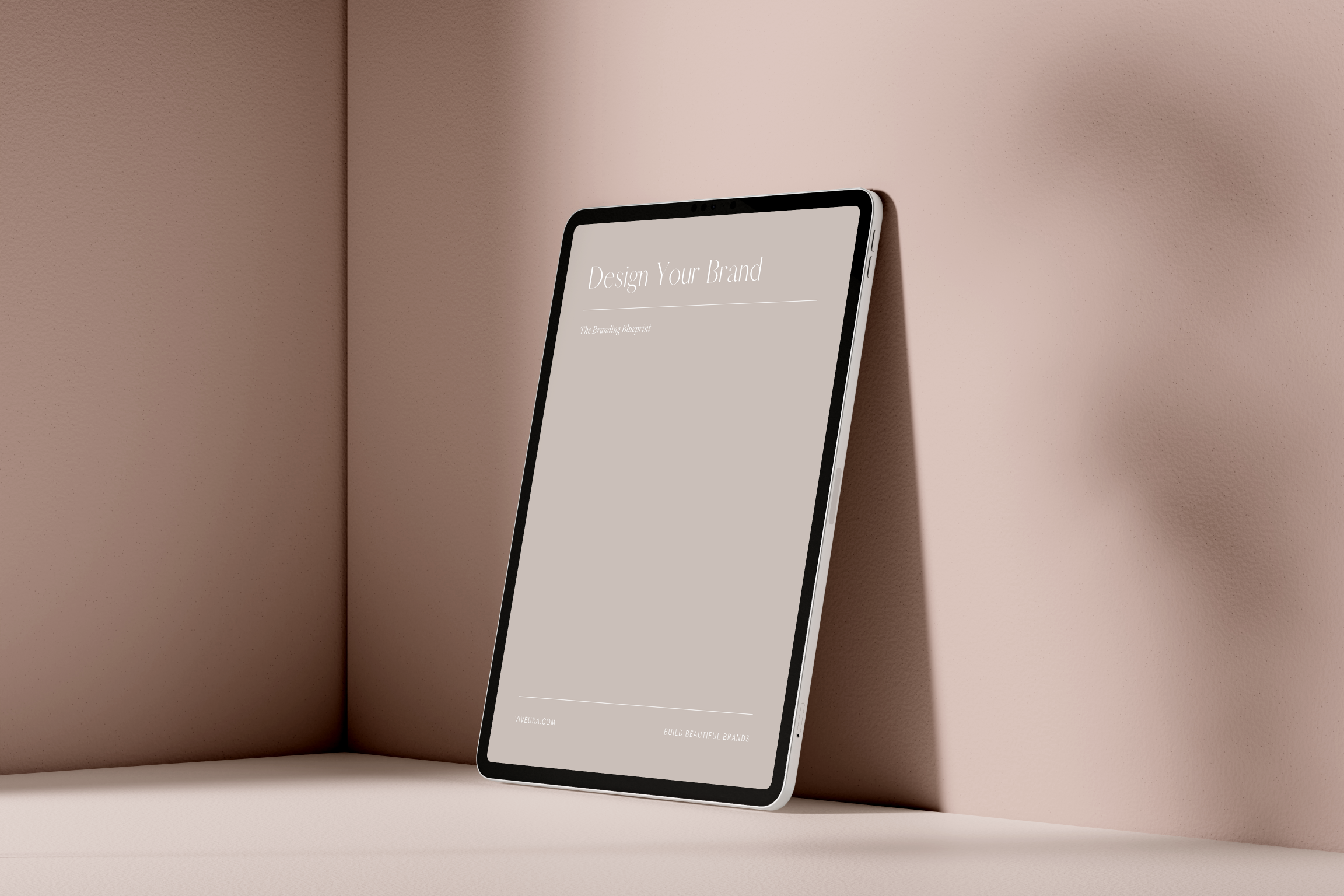How to Start a Lovely Blog and Earn a Living Blogging
Want to start or grow a blog to support a business or as a business itself? Here is an in-depth guide on how to make money blogging.
For most, blogging is a form of expression that you work on in your free time. Though there is a subset of bloggers that see its potential as a means of driving business and earning an income. If the latter applies to you, then you are in the right place.
You have likely already come across very popular blogs and found yourself thinking that starting a blog of that calibre would be a daunting task. But even the top bloggers out there were once beginners. If you have relevant and useful information to share with a specific audience, you can definitely start a blog that has the potential to succeed.
There is a lot of information circulating online. Most markets are oversaturated and many people are overloaded trying to process so much data on a daily basis. Yet, blogs remain one of the most powerful forms of communication. If you are mindful in crafting your message, stay in your lane (so to speak), and make an effort to produce a high quality experience, then readers will flock to you. And those readers can be turned into customers.
Our brand atelier thrives because all of the brands we advise, design or invest in are powered by blog content. The traffic and engagement we are able to drive on this website, as well as our other websites, helps us sustain profitable business models — and most of that traffic is due to our efforts around blogging useful content, like this article.
Our businesses are successful because they are backed by blogs. That’s because blogs attract potential clients and consumers who are actively seeking valuable information and inspiration. Once we establish trust with our high-quality content, we then position our relevant offerings.
Based on our own experience and success to-date, we believe blogging can be a viable business in and of itself, or a legitimate means of supporting a distinct business. In this guide, we will share our perspective on how to successfully start a blog and grow it to the point where you can earn a great living from it.
If you’ve already started a blog and it is not performing the way you think it should, this guide will also be beneficial to you. Note that we have an affiliate relationship with some resources mentioned in this guide and may receive compensation for our referrals (at no cost to you). However, all resources mentioned are those that we use, love, and are excited to refer you to.
How to start a blog
Determine your niche
Set up your blog
Monetize your blog
Write your blog posts
Promote your blog
Step 1: Determine your blog’s niche
The first thing you need to decide on before starting a blog is its purpose, and that involves answering two questions:
Will the blog be the business or will it be used to support a business?
What is the focus of the blog and the topics you will create content around?
Business Plan
If the blog will be the business itself or used to support a business that doesn’t already exist or isn’t performing well, then your next step is to determine your business idea and develop a business plan. The key to starting a successful blog that actually makes money is to blog with intention. What that means is that all of the content you create must serve a well-defined purpose.
Writing a simple business plan will help you lay the right foundation so that all of your blogging efforts are aligned with the strategic vision and goals you have set. Bottom line, if you want to generate revenue from you blog it should be connected to a business or run like a business — and a successful business is completely clear about its mission.
Once you finish building out your blog or business idea — or if your blog will be used to support a business that is already running and doing well — then you can move on to determining the focus of your blog and the topics you will create content around.
Blog Focus
As mentioned, the foundation of a successful blog is one that is clear about its purpose and laser focused on carrying out this mission. In order to be focused, you should develop a content strategy that guides what your blog is about. A content strategy is a plan that answers the following:
Why you are blogging — this ensures your blog content connects back to your overall blog purpose and business plan, so you can further solidify your why.
Who you are blogging for — this ensures your blog serves the needs of a well-defined target audience, as in order to blog professionally and earn a living from it, your niche must be profitable.
With a focused niche, you can attract and maintain the right audience and avoid confusing your readers with too many different types of content. A quick and easy way to establish a niche is to:
Write down the themes that your existing business focuses on. If you don’t have a business, write down a list of topics you have a strong interest in blogging about.
Try to gauge the popularity (and potential profitability) of each theme/interest with keyword research.
A concept that we always turn to when deciding on what types of blogs and businesses we want to build or invest is Meliora, a latin term that means ever better. People want to thrive and if you want to build a following and earn money from it, your blog should empower people to do just that. Popular blog and business niches that support people in becoming “ever better” include but aren’t limited to:
Personal development
Health and wellness
Business and finance
Family and relationships
Fashion and lifestyle
Obviously there are subcategories within these broader niches that your blog can focus on (for instance you may want to target weight loss within health and wellness), but we’ve found that these are the main categories where individuals have more of a willingness to spend money for results.
Blog Content
With your niche set, the next question is: what are you blogging about? Answering this question ensures that your topics are relevant to both your purpose and your audience. You blog topics will also be the means in which you organize your blog.
This lifestyle publication has the overarching purpose of helping readers elevate their lives. It’s audience is made up of highly accomplished women who are tired of striving and want to start thriving and enjoying their lives. After working so hard, these women are ready to pursue pleasure and leisure.
Viveura organizes its content around five core topics — Luxury Living, Personal Growth, Personal Style, Health & Wellness, Philosophy & Spirituality — as after much research these are the topics that resonate most with readers and are best linked to the brand’s purpose.
Blog Format
Answering this question helps you determine what type of content will best serve the needs of your audience while being in line with your business purpose and goals. The “how” includes the type of content you will create (articles, videos, podcasts) as well as the channel you will use to distribute it (website, social media, video platform).
What you are trying to determine is the most effective format to deliver your topics to your readers by taking into consideration a combination of what you believe you are good at and what will resonate most with your audience.
As an example, here on this website I use articles as my primary format for delivering ideas and insights to my reader. I love to write and I know my audience loves to read. I mix in images, audio and sometimes videos to keep my articles engaging, but writing and distribution via my website is my how.
Step 2: Set up your blog
Blog Name
What will you name your blog? Now that you’ve decided on your blog’s niche, it’s time to decide what you will call it. For the websites I create I tend to take one of two approaches to this:
Name your blog based on keywords
The first approach is to research the keywords that people use to search for ideas and solutions within your niche and use one of the most popular terms as your blog name. A couple of years ago I sold a popular blog that had the minimalism.co domain and it greatly benefited from that.
A quick and easy way to do this is to go on Pinterest and insert a word or phrase in the search box then see what additional keywords Pinterest suggests. From this list use a keyword research service such as Moz to see which terms have the largest search volume. Once you narrow down your list of suggested terms with the highest search volume, see which ones you can reserve as a domain.
The great thing about this approach is that you stand a greater chance of being able to rank on a keyword if your blog name and domain name is also the search term. On the other hand this isn’t the most unique name, which brings me to my second approach.
Name your blog more creatively
The second approach is to name your blog more creatively which allows it to stand out and reflect more of your personality as well. If you ever decide you want to trademark your name then this is the best approach for that as well. We used this approach for our lifestyle brand Viveura, which means the pursuit of pleasure.
First my team and I brainstormed a long list of words that meant “pleasure” or “leisure” in different languages, then started coming up with different combinations of names using these words. We loved the French word Viveur which roughly means someone who lives well. We added an “a” at the end to make it more feminine, and this ended up suiting the purpose of the website perfectly.
When deciding on naming your blog more creatively try to keep it at least somewhat connected to the overarching theme of your blog so it isn’t confusing or off-putting to potential readers. If you have a personal brand, you can also call your blog by your actual name.
Blog Website
Now that you have your blog’s content strategy in place, it’s time to execute and prepare for launch by building your blog website. For purposes of fully owning and controlling your content, I strongly recommend that you set up a distinct website for your blog or use the website that your business is run through.
There are many blogging and social media platforms such as Medium that allow you to publish and host content. However, their policies and algorithms can change at any time which could greatly impact how your audience sees and interacts with your content. You can definitely use these platforms to distribute and market your blog content (which I discuss later) but your own website should be the primary hub.
I won’t even go into all of the different website builders that are available because that would call for an entirely separate article. I have tried many of them and the simplest and quickest way to build a blog website that I know of is with Squarespace.
As of writing this, Squarespace is the only website builder available that doesn’t require coding knowledge and has everything you need as an inherent feature of the platform without the use of plug-ins and add-ons, including:
Domain name
Secure hosting
Logo builder
Gorgeous templates
Intuitive widgets
Business email address
Email campaign management
Marketing tools
This website and all of the blogs and businesses that I have personally built are developed using Squarespace. Once you decide on Squarespace, the next is choosing from the plethora of beautiful templates that are available. The great thing about Squarespace is that all templates within a family share the same set of features, so you can choose one template but still easily incorporate some of the features from another.
Blog Creative
So once you get your Squarespace website set up, you will need to start populating your blog with high-quality content. It is likely that you will want a mix of content to really bring your blog to life, and the easiest way to do that is by incorporating graphics and images.
If you are a photographer or graphic designer then this will be easy, but if you are a writer like me, what do you do? We personally use the following websites to find the bulk of our imagery:
As part of maintaining a strong brand I believe elevated imagery is a must. We use Editorial Stock Images to access a repository of chic photos for a very reasonable monthly price. These are some of the best images we’ve found and believe it’s worth the small investment. Take 15% off using our code EVERESSE15 at checkout.
If you need beautiful creative mockups then Moyo Studio should absolutely be on your list. Their photo and mockup bundles, especially their scene cretors, are stunning. We’ve used Moyo Studio for years to mockup our workbooks and guides and to find gorgeous stock photos as well. Take 15% off using our code EVERESSE15 at checkout.
If you need more than just image and mockups, then turn to Creative Market for digital assets such as fonts, graphics and templates. This is a very popular resource for small business owners, entrepreneurs, marketers, bloggers, and designers looking for high-quality creative elements for their projects at an affordable price.
For developing and customizing other creative, we use Canva to handle almost all of our graphic design needs. From presentations and slides to beautiful social media graphics, it's perfect for non-designers who need professional-grade design assets. Canva also has a very robust stock photo library.
Step 3: Monetize your blog
If you want to blog professionally and earn revenue from your blog then you need a monetization strategy which is key to your ability to make money and be profitable. If your blog is linked to an existing business then the monetization strategy is clear: write about topics that will attract people and convert them into your core products or services. But if you have a stand alone blog, how do you make money blogging? Here is a list of common monetization strategies that are most relevant to blogs:
Affiliate Marketing
This model involves you referring readers to other external products or services that you believe in, and earning commission from your referral. For instance, this website refers readers to elevated brands and goods that we’ve tried and love.
Online Ads
This model involves you displaying ads on your website and receiving a commission for clicks or purchases. For lifestyle and consumer blogs, you can display premium ads via a partnership with a high-quality network such as Mediavine.
Digital Products
This involves you creating online informational products such as books and courses. For instance, this website has a membership program that provides a robust digital repository of resources for readers who want to go next level in their journey.
Brand Sponsorships
This involves you partnering with brands to promote their offerings in a tasteful way in exchange for payment or other perks. When I was a luxury and fashion executive for brands like Ralph Lauren, I would find high-end style bloggers and pay substantial fees to have them promote different campaigns via their blog and social channels.
Special Services
Services are offerings such as coaching, consulting or freelancing that you offer through your blog. For example, you may attract readers through a blog post by helping them solve a problem and then they may hire you because they trust your expertise given the quality of the post.
No matter what monetization strategy you choose, please be authentic. Only promote products, services or brands you care about and don’t compromise the quality of the content just to make a quick buck. When you have a strong point of view, readers will come to respect and rely on your opinion, and once that happens money will start organically flowing in.
Step 4: Write your blog posts
Now it’s time to get into the core of what blogging is all about: writing. No matter what you blog about, who you blog for, or what format you use, writing will be a core aspect of your blog. I have a few key tips about blog writing for you to take into consideration:
Write long-form evergreen posts
From experimenting with dozens of different blogs, I personally believe that evergreen posts, that are a minimum of 1500 words in length, are the best performing. Evergreen posts are sustainable pieces of writing that stay relevant for years. The type of topics you read in the news are based on current trends, fads and season. The type of topics that we write about on this website, for example, are evergreen.
If your blog is filled with seasonal pieces then you have to constantly write new blog posts to keep traffic coming in and readers engaged. If your blog incorporates evergreen pieces, then one post can attract, engage and convert readers years after you originally wrote it.
Long-form posts tend to perform better in search engines, particularly Google. Though length is not the only indicator of quality, there is a clear correlation between length and substance. Moreover, certain topics (like how to start a blog) simply require more information, so you have to be sure to fully provide the answer or solution that the reader is looking for when they land on your post.
Write keyword-centric posts
Keyword-centric posts are simply those that are linked to topics that your audience is actually actively searching for via Google, Pinterest, and other search or social engines. Instead of just randomly writing blog posts based on a whim, you want to be strategic and write about information that is of interest and use to your readers.
Write how you speak
Professional blogging is a bit more casual than business or academic writing so try to write how you speak if writing from a personal perspective. Regardless if your blog voice is from your personal perspective or developed specifically for that brand, it should be eloquent.
Use an easy-to-follow structure
Even though blogging is casual and conversational, your blog posts still need to follow a structure that makes it easy for readers to navigate your content. On this website, I prefer to use the SAR method (Situation-Action-Result) and organize my posts with a table of contents because much of what I write about is regarding personal or professional development. However, other writing formats, such as the Hero’s Journey storytelling structure, are also great to use for blogging.
Support your words with facts or examples
To give credibility to your words and establish yourself as an expert on your topic, always back up your blog posts with additional research, studies or examples. Try to integrate some sort of proof to assure readers that you know what you are talking about.
Use an editor to grammar and spell check
You should use a spell and grammar check service, such as Grammarly, to proofread your posts. As your blog grows you can also hire a writer to review spelling, grammar, punctuation, clarity, engagement, and delivery mistakes. Don’t overthink this though. It’s better to get your posts published than fuss over minor typos.
Step 5: Promote your blog
Marketing your blog effectively is crucial for gaining visibility and attracting a large audience, which you’ll need to make money blogging. Here's a summary of various ways in which a blogger can promote their blog:
Search Engine
One of the most effective ways to attract traffic to your blog is to optimize blog posts for search engines by using relevant keywords naturally within your content. You can do this by creating descriptive and keyword-rich titles and text.
Our preferred platform for driving traffic to consumer and lifestyle blogs via search is Pinterest. We consider it to be a goldmine for finding high-intent customers with deep pockets, who are ready to be inspired and readily spend on the offerings that appeal to them.
Hailed as a visual discovery and bookmarking platform, Pinterest has transcended its initial reputation as a platform for hobbyists and DIY enthusiasts. Creators and entrepreneurs have increasingly recognized the untapped potential that Pinterest holds for business growth, brand visibility, and audience engagement.
Social Media
Sharing your blog posts on popular social media platforms like Tiktok and Instagram is the next best way to grow a following and promote your blog. Figure out which platform works best for you then use engaging captions and relevant hashtags to reach a broader audience. Also pay attention to any relevant trends and hop on the bandwagon, which will allow you to amplify your growth much faster.
Email Marketing
Build an email subscriber list is the best way to own your audience, and not be at the mercy of external search or social channels. I recommend having a strong email opt-in offer (like we do on this website) and sending regular newsletters with links to your latest blog posts. Also use compelling subject lines to increase open and engagement rates.
Other Promotions
I recommend combining the above strategies with the additional ideas below, so you can create a well-rounded approach to increasing visibility, growing your audience, and establishing your blog as a valuable resource within their niche.
Collaborate — Guest post on other blogs within your niche to reach their audience. Invite guest bloggers to contribute to your blog, increasing your content variety.
Network — Attend industry events, webinars, and conferences to connect with other bloggers and influencers. Engage in conversations and build relationships with your peers.
Syndicate — Republish your content on reputable platforms or content aggregators with proper attribution. Consider submitting your blog to blog directories or syndication services.
Giveaways — Host contests or giveaways to encourage user engagement and attract new readers. Require participants to share your blog or follow your social media accounts for entry.
























